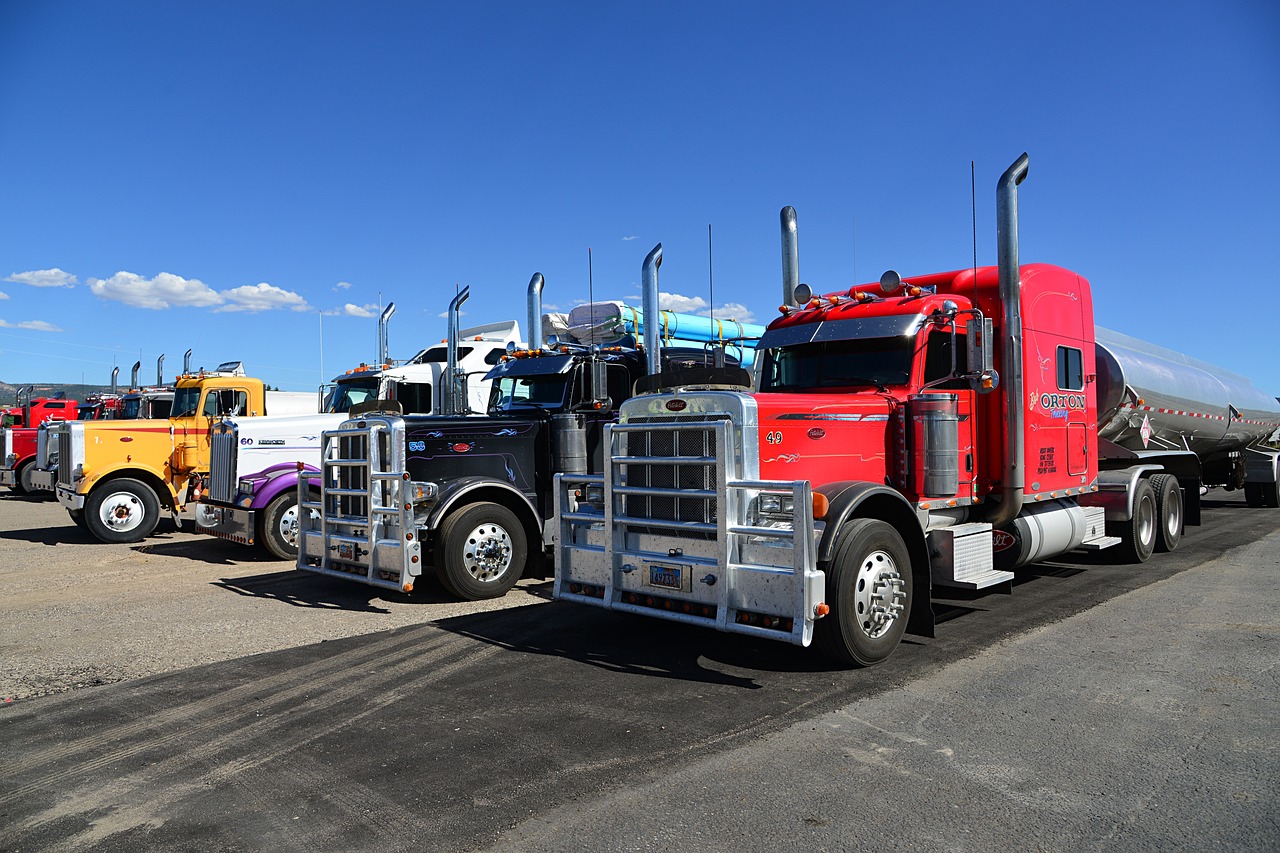In the world of driving, knowing how to tow a vehicle can be a valuable skill to possess, especially for beginners. Whether you find yourself in an emergency situation or simply want to help a friend, understanding the fundamentals of towing can save you time, money, and headaches. This article aims to equip you with the essential knowledge needed to tow for beginners, from understanding weight limits and safety precautions to mastering the proper techniques. So, let’s get started on your journey to becoming a competent and confident tower!
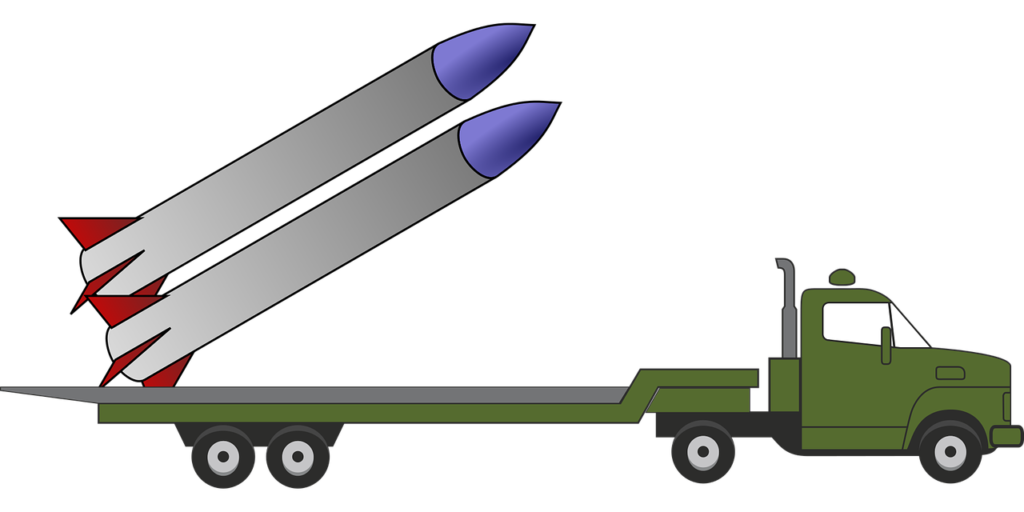
This image is property of pixabay.com.
Choosing the Right Tow Vehicle
When it comes to towing, one of the first things you need to consider is the weight and towing capacity of your vehicle. The weight of the trailer and its contents should not exceed your vehicle’s towing capacity. Exceeding this limit can put unnecessary strain on your vehicle and compromise your safety on the road.
Before purchasing a tow vehicle, it is important to research its towing capacity and determine whether it is suitable for your towing needs. You can usually find this information in the vehicle’s owner’s manual or by contacting the manufacturer directly. By choosing a vehicle with the appropriate towing capacity, you can ensure a smoother and safer towing experience.
Consider the weight and towing capacity
Once you have determined the towing capacity of your vehicle, it is crucial to consider the weight of the trailer you will be towing. This includes both the weight of the trailer itself and the weight of any cargo or equipment you will be carrying. It is recommended to weigh your trailer and its contents before hitting the road to ensure that you are within the safe towing range.
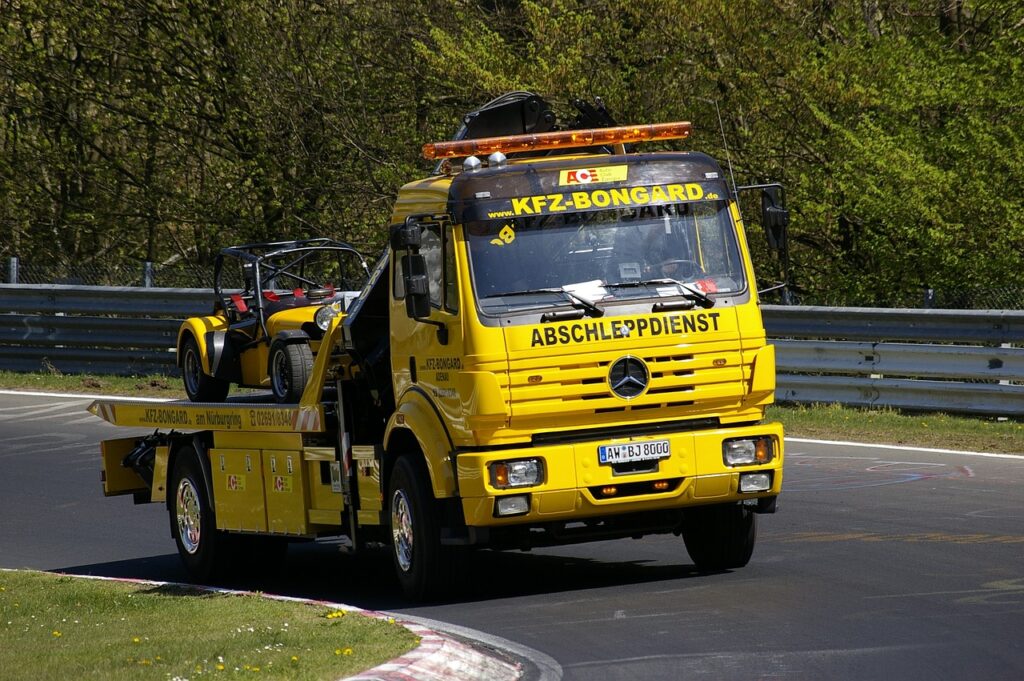
This image is property of pixabay.com.
Check if the vehicle is equipped for towing
In addition to considering the weight and towing capacity, you should also check if your vehicle is equipped with the necessary towing features. This includes a hitch receiver, which is essential for connecting the trailer to your vehicle. Some vehicles come pre-equipped with a hitch receiver, while others may require installation.
It is important to consult your vehicle’s owner’s manual or a professional to ensure that the hitch receiver is properly installed and compatible with your vehicle. Using an incorrect or improperly installed hitch can lead to trailer sway, handling issues, and potential accidents on the road.
Ensure proper hitch installation and compatibility
Even if your vehicle is equipped with the necessary towing features, it is essential to ensure that the hitch installation is done correctly and is compatible with your trailer. The hitch should be securely attached to your vehicle’s frame or hitch receiver and should provide a stable connection between the vehicle and the trailer.
When choosing a hitch, it is important to consider factors such as the trailer’s weight, tongue weight, and the type of towing you will be doing. Different types of hitches, such as ball mounts, weight-distributing hitches, and fifth-wheel hitches, are designed for specific towing needs. Understanding the different types of hitches and their purposes will help you make an informed decision and ensure a safe towing experience.
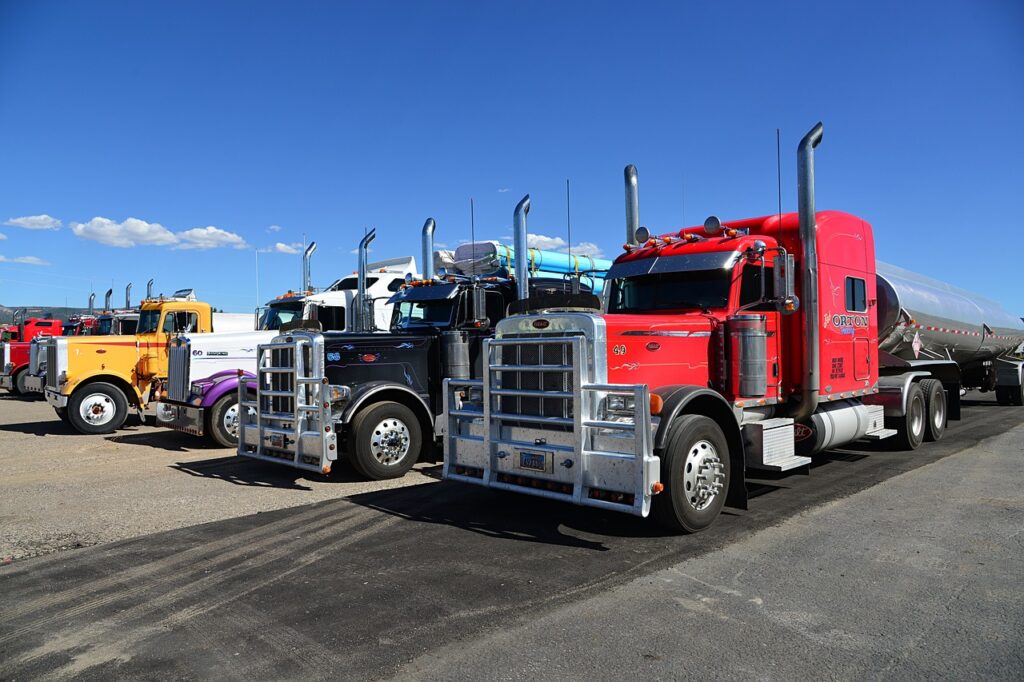
This image is property of pixabay.com.
Understanding Towing Equipment
To tow a trailer safely, it is important to familiarize yourself with the various types of towing equipment and their functions. This will not only ensure your safety but also the safety of other drivers on the road.
Learn about different types of hitches
Hitches come in different types and sizes, each designed for specific towing needs. The most common type is the ball mount hitch, which consists of a ball on a metal platform that attaches to the hitch receiver on your vehicle. Another type is the weight-distributing hitch, which is used for towing heavy loads and helps distribute the weight evenly between the vehicle and the trailer. Fifth-wheel hitches are commonly used for towing larger trailers or RVs and are mounted in the bed of a pickup truck.
By understanding the different types of hitches available, you can choose the one that best suits your towing requirements and ensure a secure and stable connection between your vehicle and the trailer.
Know the purpose of safety chains
Safety chains are an essential component of towing equipment and act as a backup in case the trailer becomes disconnected from the tow vehicle. When properly attached, safety chains create a secondary connection between the trailer and the vehicle, preventing the trailer from separating in the event of a hitch failure.
When using safety chains, it is important to cross them underneath the trailer tongue, forming an X shape. This will help prevent the tongue from hitting the ground and maintain control of the trailer if the hitch fails. Additionally, safety chains should be securely attached to the vehicle and should have enough slack to allow for turns but not so much that they drag on the ground.
Understanding the purpose of safety chains and correctly using them will provide an extra layer of security while towing and help prevent accidents caused by trailer detachment.
Understand brake controllers and towing mirrors
Using a brake controller is essential when towing a trailer with electric brakes. A brake controller allows you to control and synchronize the trailer brakes with your vehicle’s brakes, ensuring smooth and safe braking. It is important to set the brake controller properly based on the weight of the trailer and the road conditions.
Towing mirrors are also crucial for providing a clear view of the trailer and the surrounding traffic. They extend the field of vision beyond the narrow rearview mirrors of the tow vehicle and help eliminate blind spots. Properly adjusted towing mirrors will enable you to make safe lane changes, turns, and maneuvers while towing a trailer.
Preparing for the Tow
Before embarking on your towing journey, it is essential to properly prepare and inspect your towing equipment. This will help prevent any accidents or issues during your trip and ensure a smooth and enjoyable towing experience.
Inspect and maintain your towing equipment
Regularly inspecting and maintaining your towing equipment is crucial for both your safety and the longevity of your equipment. Before each trip, thoroughly inspect the hitch, safety chains, and electrical connections to ensure they are in good working condition. Look for any signs of wear, rust, or damage that may compromise their effectiveness.
Additionally, make sure to inspect and maintain the tires of both your vehicle and the trailer. Check the tire pressure, tread depth, and overall condition to ensure they are suitable for towing. Properly inflated tires with sufficient tread will provide better stability, traction, and control while towing.
Balance the weight and ensure proper weight distribution
Proper weight distribution is essential for safe and stable towing. When loading your trailer, make sure to distribute the weight evenly from side to side, as well as from front to back. This will prevent the trailer from becoming unbalanced and swaying while on the road.
To achieve proper weight distribution, place heavier items over the trailer’s axle and distribute lighter items towards the front and back. Avoid placing too much weight at the rear end of the trailer, as it can cause the tow vehicle’s front end to lift and affect steering and braking abilities.
It is also important to ensure that the total weight of the trailer, along with its contents, is within the towing capacity of your vehicle. Exceeding this limit can lead to instability, increased stopping distances, and potential damage to your vehicle’s suspension, brakes, and transmission.
Secure loose items in the trailer
Before hitting the road, secure any loose items within the trailer to prevent shifting or damage during transit. Unsecured items can create a safety hazard, as they can slide or fall, affecting the balance and stability of the trailer.
Use straps, bungee cords, or cargo nets to secure any loose items, ensuring they are tightly bound and cannot move or shift during travel. This will not only help maintain the stability of the trailer but also protect your belongings from damage.
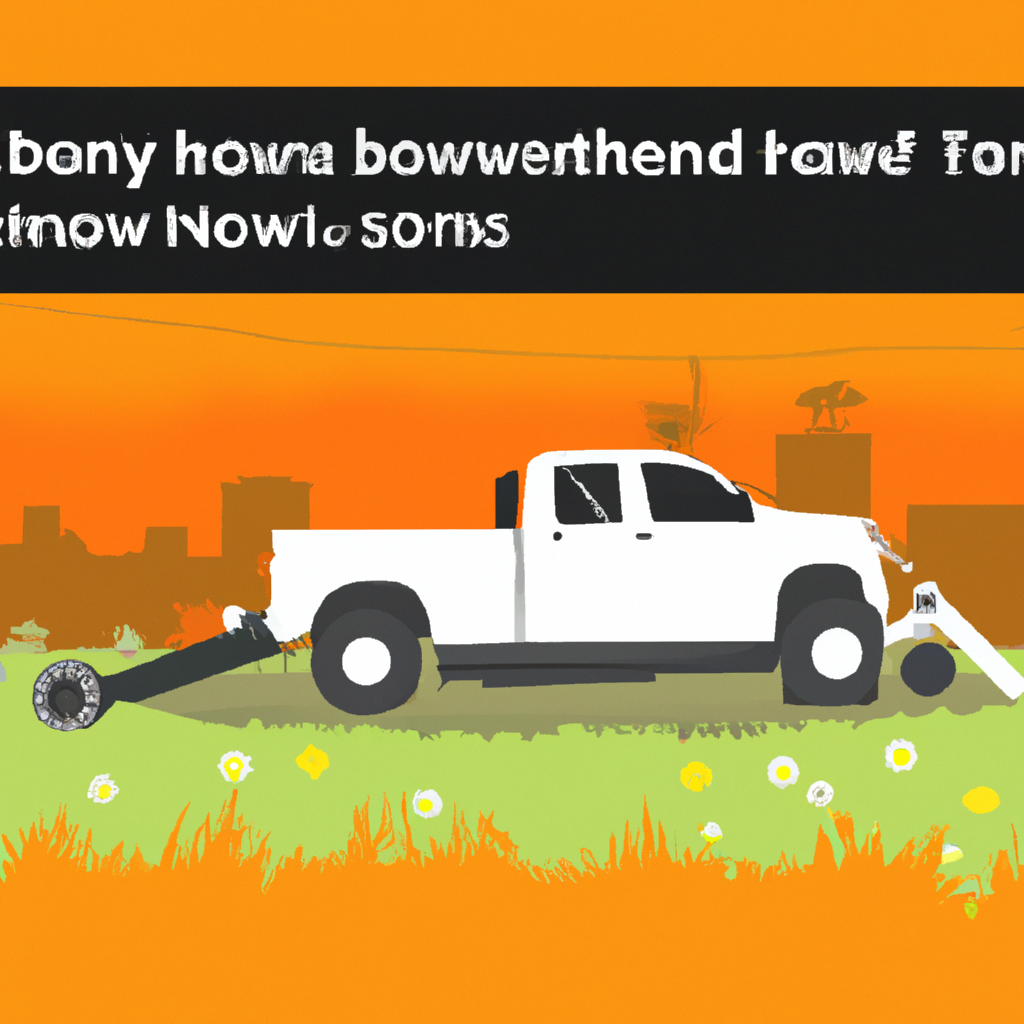
Hooking Up the Trailer
Now that you have prepared your towing equipment and properly loaded your trailer, it’s time to hook it up to your tow vehicle. Following the correct procedure when hooking up the trailer will ensure a secure connection and minimize the risk of any accidents or mishaps on the road.
Align the vehicle and trailer
When aligning the vehicle and trailer, it is important to have a clear line of sight and ample space to maneuver. Backing up your vehicle slowly and steadily will help align the hitch receiver with the trailer coupler. Efficiently aligning the two will make the hitching process easier, reducing the risk of damage or misalignment.
Attach the hitch and safety chains
Once your vehicle and trailer are properly aligned, attach the hitch to the trailer coupler using the appropriate latch or locking mechanism. Ensure that the hitch is securely fastened and the locking mechanism is engaged, preventing any accidental disconnection during transit.
Next, attach the safety chains, crossing them underneath the trailer tongue in an X shape. This secondary connection will serve as a backup in case the hitch fails, providing added security and preventing the trailer from separating from the tow vehicle.
Connect electrical wiring and brake controller
To ensure proper functioning of the trailer’s lights and brakes, connect the electrical wiring harness from the trailer to the corresponding socket on your tow vehicle. This will allow the trailer’s lights and turn signals to sync with your vehicle’s electrical system, making it visible to other drivers on the road.
If your trailer is equipped with electric brakes and you have a brake controller installed in your vehicle, connect the brake controller to the trailer’s braking system. Adjust the brake controller settings based on the weight of the trailer and the road conditions you anticipate encountering.
Double-check all connections to ensure they are secure and properly functioning before proceeding with your towing journey.
Performing Pre-Tow Checks
Before you embark on your towing adventure, it is crucial to perform comprehensive pre-tow checks to ensure the safety and reliability of your vehicle and trailer. These checks will help identify any potential issues or hazards that may arise during your journey.
Check trailer lights and brakes
Before hitting the road, verify that all trailer lights are functioning properly. This includes headlights, taillights, brake lights, turn signals, and hazard lights. In addition, check that the trailer’s braking system is working correctly. Ensure that the brakes engage smoothly and consistently without any unusual noises or vibrations.
Performing these checks will not only keep you within legal requirements but also increase visibility and indicate your intentions to other drivers on the road. Faulty lights or brakes can compromise safety and increase the risk of accidents.
Inspect tires for proper inflation and condition
Tire maintenance is crucial to ensure safe towing. Properly inflated tires with sufficient tread depth provide better traction, stability, and control on the road. Before embarking on your journey, inspect the tires on both your tow vehicle and the trailer.
Check the tire pressure using a reliable pressure gauge and compare it to the recommended pressure indicated on the sidewall of the tire. Make sure all tires are inflated to the correct pressure for optimal performance. Additionally, examine the tires for any signs of wear, damage, or sidewall bulges. Replace any tires that show signs of aging or deterioration.
By maintaining proper tire inflation and condition, you can minimize the risk of blowouts, tire failure, and loss of control while towing.
Verify hitch, chains, and wiring connections
Before hitting the road, thoroughly inspect the hitch, safety chains, and electrical connections to ensure that they are secure and functioning properly. Check that the hitch is properly attached to your vehicle’s frame or hitch receiver and that all bolts are tight.
Ensure that the safety chains are securely fastened and crossed underneath the trailer tongue in an X shape. Double-check the electrical connections to ensure that the lights and brakes on the trailer are synced with your vehicle.
By verifying these connections, you can prevent accidents or mishaps caused by trailer detachment or malfunctioning lights and brakes.
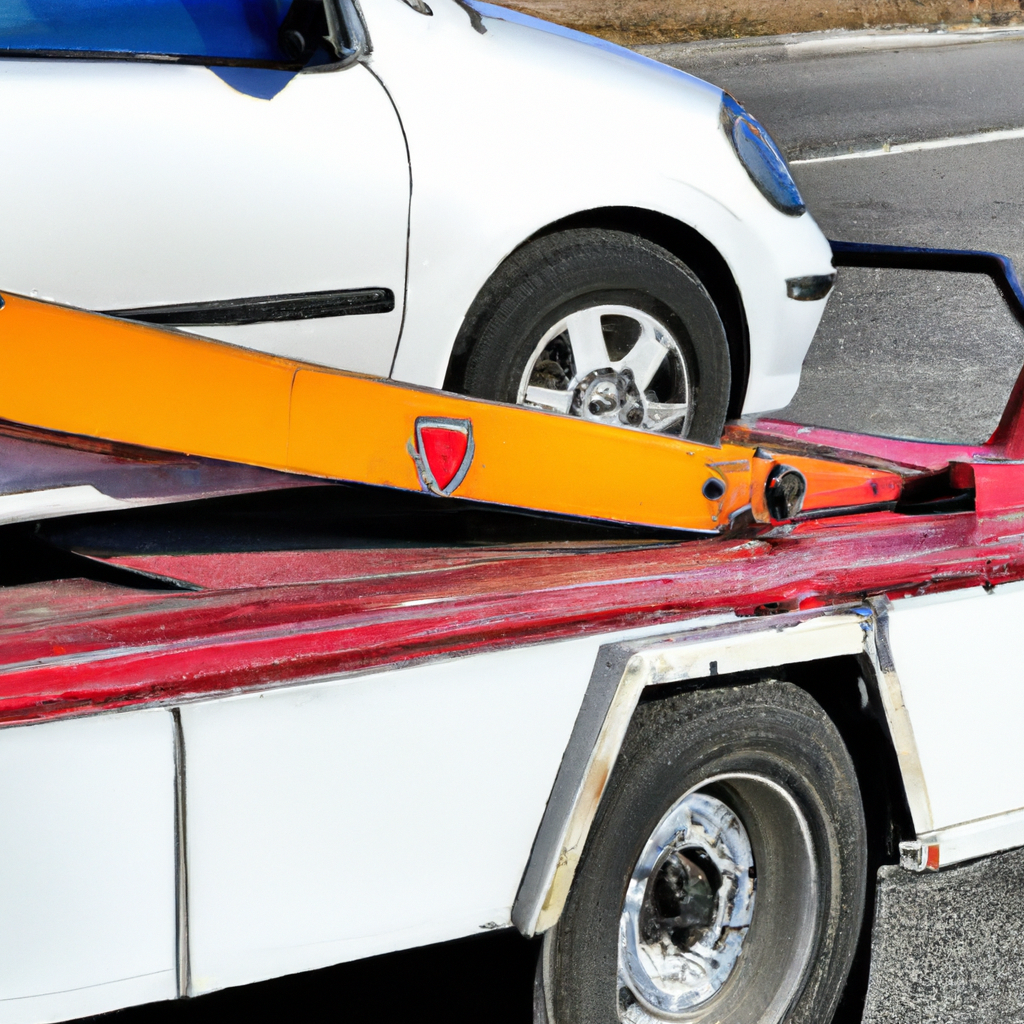
Driving with a Trailer
Driving with a trailer requires a different set of skills and techniques compared to driving without one. Adjusting your driving habits and being mindful of certain considerations will ensure a safe and stress-free towing experience.
Adjust driving techniques for towing
Driving with a trailer changes the dynamics of your vehicle, affecting its acceleration, braking, and handling. It is important to adjust your driving techniques accordingly to maintain control and stability while towing.
When accelerating, do so gradually and steadily. Avoid abrupt acceleration, as it can lead to trailer sway or loss of traction. Similarly, when braking, allow for longer braking distances and apply the brakes smoothly to avoid jerking or skidding.
Maintain a safe and consistent speed, avoiding sudden lane changes or aggressive maneuvers that can cause the trailer to become unstable. Keep a larger following distance between your vehicle and the vehicle ahead to allow for a longer reaction time.
Allow for longer braking distances
Towing a trailer increases the overall weight and momentum of your vehicle. As a result, it takes longer to come to a complete stop compared to driving without a trailer. It is crucial to factor this into your braking distance to ensure a safe stopping distance.
Increase your following distance when driving with a trailer and allow ample space between your vehicle and the vehicle ahead. This will give you enough time to brake smoothly and avoid rear-end collisions. By allowing for longer braking distances, you can significantly reduce the risk of accidents caused by inadequate stopping distances.
Be cautious when changing lanes and turning
Changing lanes and turning with a trailer requires extra attention and care. Recognize the increased length and width of your vehicle-trailer combination and allow for additional clearance when maneuvering.
When changing lanes, use your towing mirrors to check for any blind spots and ensure that the lane is clear before making the move. Signal your intentions well in advance to alert other drivers of your intentions.
When making turns, take them wider than you would without a trailer to prevent the trailer from hitting curbs or objects on the side of the road. Use small steering inputs and maintain a slower speed to ensure better control and maneuverability.
Backing Up and Parking
Backing up and parking with a trailer can be challenging, especially for beginners. However, with practice and the right techniques, you can master these maneuvers and confidently navigate tight spaces.
Use a spotter if necessary
If you are unsure about backing up or parking your trailer, it is helpful to have a spotter to guide you. A spotter can provide assistance by standing outside the vehicle and giving you clear instructions and guidance to safely maneuver the trailer.
When using a spotter, establish clear communication signals and agree on a set of hand gestures or verbal cues. This will help you understand each other’s directions and ensure safe and effective backing up or parking.
Practice in an open area before attempting difficult maneuvers
If you are new to towing, it is advisable to practice backing up and parking in an open area, such as an empty parking lot, before attempting more challenging maneuvers. This will allow you to become familiar with the handling characteristics of your vehicle-trailer combination and gain confidence in your abilities.
Start with simple maneuvers, such as straight-line backing, before progressing to more complex tasks, such as 90-degree backing or parallel parking. Take your time, go slow, and practice until you feel comfortable and in control.
Take it slow and use small steering inputs
When backing up or parking with a trailer, it is important to take it slow and make small steering inputs. The longer length and increased pivot point of the trailer require a more delicate touch to maintain control and avoid oversteering.
Turn the steering wheel in the opposite direction you want the trailer to go. As the trailer starts to move in the desired direction, straighten the steering wheel gradually to keep the trailer on the desired path. This technique, known as countersteering, will help you control the trailer’s movement and prevent jackknifing.
By taking it slow and using small steering inputs, you can safely maneuver your trailer into tight spaces and confidently park it without incidents.
Managing Hills and Slopes
Driving with a trailer on hills and slopes poses additional challenges compared to driving on level ground. Proper planning, anticipation, and adjustments are necessary to navigate hills and slopes safely.
Anticipate and downshift before climbing steep hills
When approaching a steep hill, it is important to anticipate the increased load and adjust your gear selection accordingly. Downshifting to a lower gear before ascending the hill will provide your vehicle with more power and torque, allowing it to maintain momentum.
Maintain a consistent speed while climbing the hill, avoiding abrupt throttle inputs that can cause wheel spin or loss of traction. Use the accelerator gently and keep the engine RPM within a safe range to ensure optimal performance.
Apply brakes slowly when descending
Descending steep hills can be equally challenging, as the added weight of the trailer can cause the vehicle to gain momentum. To prevent brake fade or overheating, apply the brakes slowly and steadily, using engine braking as much as possible.
Engine braking involves shifting to a lower gear, which allows the engine to slow down the vehicle by using the resistance of the transmission. This reduces the strain on the brakes and prevents them from overheating.
Avoid riding the brakes continuously while descending, as this can cause them to overheat and lose effectiveness. Instead, apply intermittent and gradual braking to maintain a safe and controlled speed throughout the descent.
Use caution when towing on slippery surfaces
Towing a trailer on slippery surfaces, such as wet or icy roads, requires extra caution and adjustments to your driving techniques. Reduce your speed, allow for longer braking distances, and give yourself plenty of space to maneuver.
Avoid sudden acceleration or deceleration, as this can cause the trailer to lose traction and fishtail. Gentle and smooth inputs are key to maintaining stability and preventing skidding or accidents.
If you encounter a particularly challenging situation, such as deep snow or icy conditions, consider using tire chains or snow tires designed for towing. These will provide better traction and control, minimizing the risk of getting stuck or losing control of your trailer.
Dealing with Emergencies
While towing, it is essential to be prepared for emergencies and know how to react calmly and safely in critical situations. By being aware of potential risks and having a plan in place, you can mitigate the impact of emergencies and protect yourself and others on the road.
React calmly and safely to trailer sway or fishtailing
Trailer sway or fishtailing is a common problem that can occur while towing. It is characterized by the trailer oscillating or swinging from side to side, potentially leading to loss of control if not addressed promptly.
If you notice trailer sway or fishtailing, the key is to remain calm and take immediate action. Avoid applying the brakes suddenly or trying to steer out of the sway, as this can make the situation worse.
Instead, gradually reduce your speed by taking your foot off the accelerator. This will allow the combination of your vehicle and trailer to stabilize. Once the sway subsides, make sure to check the cause of the sway and address any potential issues, such as improper weight distribution or overloading.
Handle a blown tire while towing
Experiencing a blown tire while towing can be alarming, but it is important to react calmly and follow the correct procedure to ensure your safety and the safety of others on the road.
When a tire blows out, you may feel a sudden pull to one side or hear a loud bang. Immediately take your foot off the accelerator and avoid applying the brakes abruptly, as this can cause your vehicle to skid or lose control.
Steer the vehicle in the opposite direction of the blown tire to maintain control. Gradually and gently apply the brakes to slow down and safely pull over to the side of the road.
Once you are safely parked, assess the damage and change the tire if necessary. Ensure that you have a spare tire, jack, and lug wrench readily available in case of emergencies. If you are uncertain about changing a tire yourself, contact roadside assistance or a professional for assistance.
Know how to check and add trailer brake fluid
If your trailer is equipped with hydraulic brakes, it is important to know how to check and add brake fluid when necessary. A low brake fluid level can compromise the braking performance of the trailer and pose a safety risk.
Start by locating the brake fluid reservoir on the trailer. Remove the cap and check the fluid level, which should be between the minimum and maximum marks indicated on the reservoir. If the fluid level is low, carefully add brake fluid recommended by the manufacturer until it reaches the appropriate level. Be cautious not to overfill the reservoir.
Regularly checking and maintaining the brake fluid level in your trailer will ensure optimum brake performance and contribute to safe and reliable towing.
Parking and Storing the Trailer
When you have completed your towing journey, it is important to properly park and store your trailer to maintain its condition and ensure its security.
Find a suitable storage location
When choosing a storage location for your trailer, consider factors such as accessibility, security, and local regulations. Ideally, the storage location should be easily accessible without obstacles or tight spaces that can make parking or retrieving the trailer difficult.
Security is paramount to protect your trailer from theft or vandalism. Look for secure facilities that have appropriate lighting, surveillance cameras, and access controls to deter potential criminals. If storing the trailer at home, consider installing additional security measures, such as locks, wheel clamps, or hitch locks.
Further, consult local regulations and restrictions regarding trailer storage. Some areas may have specific rules regarding parking, duration, or storage size. Ensuring compliance with these regulations will prevent any legal issues or inconvenience in the future.
Properly secure the trailer to prevent theft
To prevent trailer theft, it is essential to properly secure the trailer when it is not in use. Utilize security measures such as wheel locks, hitch locks, and coupler locks to deter thieves from targeting your trailer.
Wheel locks are designed to immobilize the trailer by preventing the wheels from rotating. Hitch locks secure the trailer coupler to the hitch ball, making it difficult for someone to connect and tow the trailer away. Coupler locks prevent unauthorized removal of the trailer from the towing vehicle.
Using a combination of these security measures will significantly reduce the risk of trailer theft and provide peace of mind when the trailer is stored or parked.
Perform regular cleaning and maintenance
Regular cleaning and maintenance are essential to keep your trailer in good condition and prolong its lifespan. After each trip, wash the exterior of the trailer to remove dirt, grime, and road salt that can cause corrosion or damage.
Inspect the trailer for any signs of wear, damage, or potential issues. Check the tires for proper inflation, tread wear, and any signs of cracking or degradation. Lubricate moving parts, such as hinges and couplers, to ensure smooth operation. Additionally, inspect the electrical connections and lights to ensure they are functioning correctly.
Performing regular maintenance will help identify any potential problems early on and allow for timely repairs or replacements. This will promote the longevity of your trailer and ensure its reliable performance for years to come.
In conclusion, towing a trailer can be a rewarding and enjoyable experience when done with the right tow vehicle, proper equipment, and knowledge. By considering the weight and towing capacity, ensuring proper hitch installation and compatibility, and understanding towing equipment, you can lay the foundation for a safe and successful towing journey. Prioritize pre-tow checks, adjust driving techniques when towing, and familiarize yourself with the best practices for backing up and managing hills and slopes. Be prepared for emergencies, know how to park and store the trailer securely, and perform regular cleaning and maintenance to protect your investment. With these considerations in mind, you can confidently embark on your towing adventures while maintaining safety and enjoying the freedom that comes with towing.
